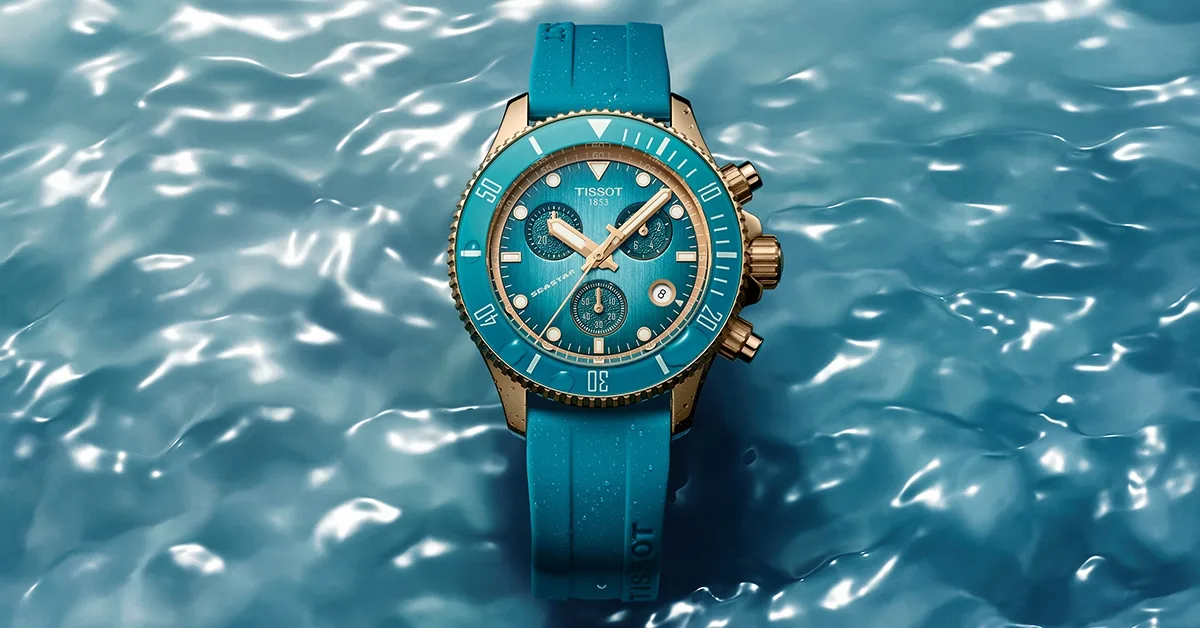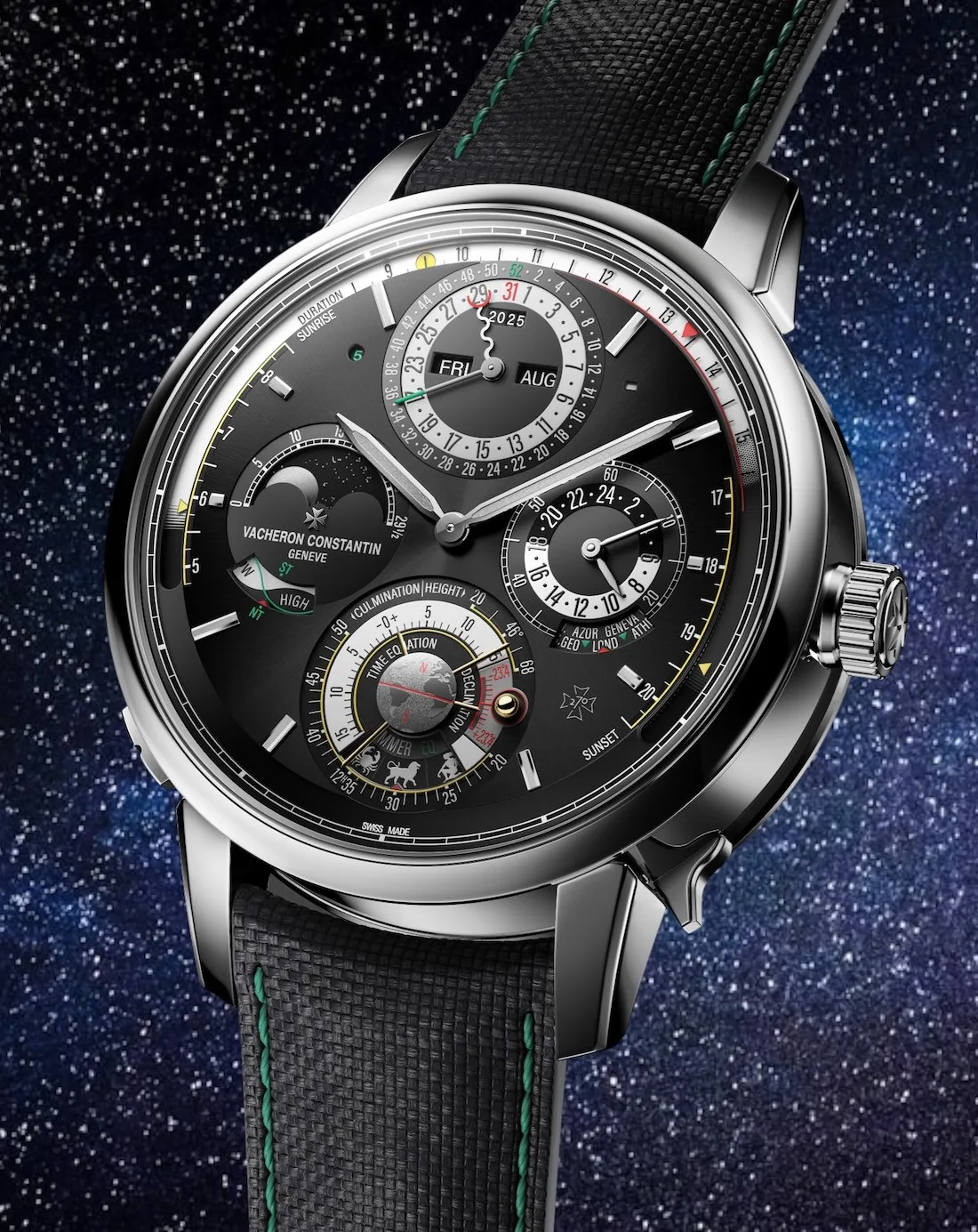Launched in 1957, the IWC Ingenieur was always intended as a technical watch, named after engineers for engineers. But it was not until Gérald Genta designed the reference 1832 – released in 1976 – that it took on a modern form. The 1970s were a decade of change in many ways and in terms of horological design, it was a brave new world.
Having already introduced the concept of the luxury steel watch with the Royal Oak and the Nautilus, Gérald Genta’s third in the triptych was the IWC Ingenieur SL. Evelyne Genta, head of the Gérald Genta Heritage Association noted that “He kept in mind the specifications when thinking of an appropriate design, such as the need for a soft iron inner cage with a double case construction to protect the movement against the magnetic field, and that the movement had to be shock protected”.
“IWC gave Gérald complete freedom with the new Ingenieur, which became both a tool watch and an avant-garde design object.”
– Evelyne Genta

According to IWC documents, it was the marketing director Alexandre Ott who approached Genta to convince him to take on the new project. Dr David Seyffer, the IWC museum curator, commented, “Alexandre was a very open minded and trusted completely his vision; he knew that a fresh idea was needed and Gérald was the one that could bring innovative designs to the world of IWC”. Evelyne added, “IWC gave Gérald complete freedom with the new Ingenieur, which became both a tool watch and an avant-garde design object. He found a way to balance the proportions, creating a completely new look.” The drawing delivered in 1974 showed a watch with an integrated steel bracelet and a structured dial. The key design feature was the screw-on bezel with five recesses.
The Ingenieur line evolved into different forms over the decades. The newly launched Ingenieur 40 signifies a return to the genesis of the watch. First, the origins of the name. Dr David Seyffer, believes that “Ingenieur” was bestowed on it by engineer Albert Peleton and Eric Grieshaber, who was the commercial director, to signify that this was a timepiece dedicated to “engineers as heroes, the architects of the future”. Second, the aesthetics that would make it into an icon of horology: the design by Gérald Genta, whose initial drawing was discovered during the conception of the Ingenieur 40, and which has since been added to the archive.

The IWC Ingenieur 40 signifies a return to the genesis of the watch, based on simplicity and functionality.
The commission for an all-steel watch was also partially in response to market forces. The quartz crisis was well and truly embedded in the Swiss watch industry, the price of gold was forcing manufacturers to rethink their raw materials for cases and bracelets; and there were higher expectations from design and engineering to provide increased value to the final product.
On the other hand, the rise in demand for consumer electronics meant a sharp increase in the demand for electric power, which precipitated the adoption of nuclear power as a source of electricity, clean, efficient and nearly limitless. Nuclear power may have also influenced Gérald Genta’s design for the Ingenieur. While the muses for the Royal Oak and the Nautilus are well known, the creative inspiration for the IWC watch remains uncertain. One possibility is the sight glass portal for a nuclear reactor that allows an engineer to view the harnessing of the atom’s power. The bezel certainly resembles that form, as it has the same enhanced circular frame with the evenly spaced bolts. So, it could be possible that the watch ultimately designed for engineers had an object that represented the pinnacle of engineering ingenuity as its inspiration.


Although not ratified, many believe that Gérald Genta based the design of the Ingenieur on a nuclear reactor’s sight glass.
On the topic, Evelyne remarked, “Gérald tended to draw inspiration from industrial objects; the influence behind other watches he designed are well known. While there is no recognised muse behind the Ingenieur, it was clear that it was meant for engineers. Therefore, due to the importance at the time of the nuclear industry, it is possible that the bezel design came from a reactor’s sight glass.”
As with the other luxury steel watches at the time, this innovative Ingenieur model went on sale for what was considered a very high price for a watch made of an ordinary metal: 2,000CHF. Due to its large 40mm case size, the watch was soon nicknamed “Jumbo.” The automatic calibre 8541 was mounted on rubber buffers to protect it from shocks and impacts. The soft iron inner case (aka a Faraday cage) shielded the movement from magnetic fields. Despite its innovative design, Gérald Genta’s Ingenieur SL, reference 1832, did not enjoy commercial success. Only about 1,000 pieces were sold between 1976 and 1983.

Examples of the 1970s consumer electronics influenced by Dieter Rams’s design principles, which became the reference book for technology aesthetics in that decade.
For Chris Grainger-Herr, IWC,’s CEO, reference 1832 was wrapped into the zeitgeist that was Dieter Rams’s 10 principles of design, which in the 1970s became like the Biblical commandments for designers all around the world. Introducing the new Ingenieur 40, he explained, “We understood that we had to keep the principle of less being more, but the watch had to be functional too, respecting and understanding the user. As such, we had to reduce the necessary elements to a minimum to create longevity, and making sure the product was sustainable and could be used for a long time.”
The IWC Ingenieur 40 is a faithful rendition of the 1976 model with the necessary improvements and updates to make it as desirable as the vintage pieces. Gérald Genta’s avant-garde design is amply illustrated with how modern his Ingenieur still looks today. In fact, the newly launched iteration stays true to his design with just a few tweaks and the addition of crown guards. There is the same textured dial, now available in black, white and aquamarine, the same design of hands and hour markers, the integrated steel case and bracelet, and the same dimensions, all enhanced with modern manufacturing prowess and finesse.
“We understood that we had to keep the principle of less being more, but the watch had to be functional too, respecting and understanding the user.”
– Chris Grainger-Herr

What was once considered a large case diameter is now viewed as perfectly normal for a sport watch. The polished edges are a little sharper and more precise; the integration of the case and bracelet is more accomplished with less play between the parts. IWC has retained the same sealed case-back, with the Faraday cage and rubber shock absorption buffers. As expected, the Ingenieur 40 is powered by a new movement, the IWC manufactured 32111 calibre with an automatic winding system, which comes with power reserve of 120 hours, and the watch is water-resistant to 100 metres.
The new models are available through selected IWC boutiques. Additionally, it is eligible for registration under the “My IWC” care program, benefitting from a six-year extension to the standard two-year International Limited Warranty. Find out more HERE.
Words: Dr Andrew Hildreth
Opening image: courtesy of Dr Andrew Hildreth

















Show Comments +